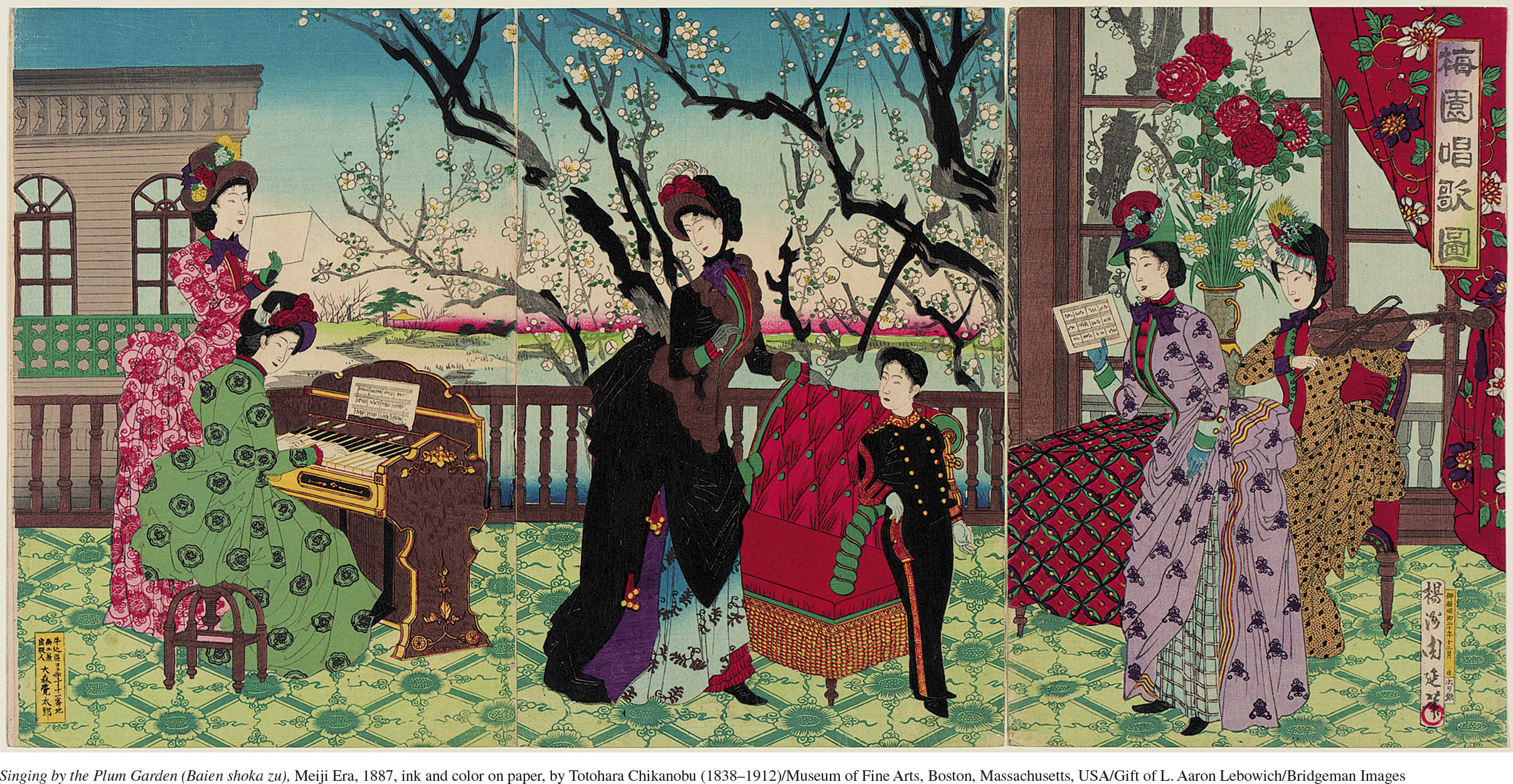Source 19.5: Westernization
The great debate of the 1850s and 1860s, prompted by Perry’s arrival, came to an end with the Meiji Restoration of 1868. Now the shogunate was replaced by a new government, headed directly by the emperor, and committed to a more thorough transformation of the country than Sakuma Shozan had ever imagined. Particularly among the young, there was an acute awareness of the need to create a new culture that could support a revived Japan. “We have no history,” declared one of these students; “our history begins today.”4 In this context, much that was Western was enthusiastically embraced. The technological side of this borrowing, contributing much to Japan’s remarkable industrialization, was the most obvious expression of this westernization.
But borrowing extended as well to more purely cultural matters. Eating beef became popular, despite Buddhist objections. Many men adopted Western hairstyles and grew beards, even though the facial hair of Westerners had earlier been portrayed as ugly. In 1872, Western dress was ordered for all official ceremonies. Ballroom dancing became popular among the elite, as did Western instruments like the piano and harpsichord. Women in these circles likewise adopted Western ways, as illustrated in Source 19.5, an 1887 woodblock print titled Illustration of Singing by the Plum Garden. At the same time, the image also includes many traditional Japanese elements. The flowering trees in the background had long been an important subject of study in Japan’s artistic tradition, and the flower arrangement on the right represents a popular Japanese art form. Moreover, the dress of the woman in the middle seems to reflect earlier Japanese court traditions that encouraged women to wear many layers of kimonos.
Questions to consider as you examine the source:
- What elements of Western culture can you identify in this visual source?
- In what ways does this print reflect the continuing appeal of Japanese culture? Pay attention to the scenery, the tree, and the flowers.
- Why were so many Japanese so enamored of Western culture during this time? And why did the Japanese government so actively encourage their interest?
Women and Westernization

Notes
- Quoted in Marius B. Jansen, The Making of Modern Japan (Cambridge, MA: Harvard University Press, 2000), 460.